Shenzhou 11
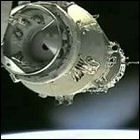 China’s Shenzhou 11 mission is launched, the country’s sixth crewed flight, with a two-man crew consisting of Jing Haipeng (veteran of the Shenzhou 7 and Shenzhou 9 missions) and rookie taikonaut Chen Dong. The vehicle’s destination is the recently-launched Tiangong-2 space station, where it berths for nearly a month, giving the crew more room to perform experiments and Earth observations. Shenzhou 11 returns to Earth in November after a full month in orbit.
China’s Shenzhou 11 mission is launched, the country’s sixth crewed flight, with a two-man crew consisting of Jing Haipeng (veteran of the Shenzhou 7 and Shenzhou 9 missions) and rookie taikonaut Chen Dong. The vehicle’s destination is the recently-launched Tiangong-2 space station, where it berths for nearly a month, giving the crew more room to perform experiments and Earth observations. Shenzhou 11 returns to Earth in November after a full month in orbit.
Tiangong-2 space station launched
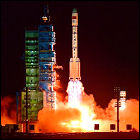 China launches its second space station, Tiangong-2, into orbit, ahead of a Shenzhou flight scheduled to carry the station’s first crew in October. Weighing over nine tons, Tiangong-2 is larger than its predecessor (which remains in orbit unoccupied, and believed to be losing attitude control), and is capable of being resupplied by uncrewed cargo vehicles called Tianzhou, similar to the Russian Progress vehicles that have resupplied Salyut, Mir, and the International Space Station. Plans at the time of launch call for Tiangong-2 to be visited by two crews.
China launches its second space station, Tiangong-2, into orbit, ahead of a Shenzhou flight scheduled to carry the station’s first crew in October. Weighing over nine tons, Tiangong-2 is larger than its predecessor (which remains in orbit unoccupied, and believed to be losing attitude control), and is capable of being resupplied by uncrewed cargo vehicles called Tianzhou, similar to the Russian Progress vehicles that have resupplied Salyut, Mir, and the International Space Station. Plans at the time of launch call for Tiangong-2 to be visited by two crews.
Shenzhou 10
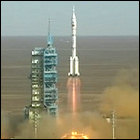 The Chinese manned space mission Shenzhou 10 lifts off, carrying taikonauts Nie Haisheng, Zhang Xiaoguang and Wang Yaping to the orbiting Tiangong-1 space laboratory module for a stay of over two weeks. This is the fifth manned flight in the history of the Chinese space program, and the second (and is expected to be the last) to visit Tiangong-1. A larger orbital station, Tiangong-2, is under development.
The Chinese manned space mission Shenzhou 10 lifts off, carrying taikonauts Nie Haisheng, Zhang Xiaoguang and Wang Yaping to the orbiting Tiangong-1 space laboratory module for a stay of over two weeks. This is the fifth manned flight in the history of the Chinese space program, and the second (and is expected to be the last) to visit Tiangong-1. A larger orbital station, Tiangong-2, is under development.
Shenzhou 9 docks at Tiangong-1
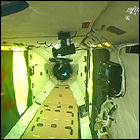 The three-person crew of Chinese space vehicle Shenzhou 9 successfully achieves an automated docking at Tiangong-1, China’s first space station. The crew spends a total of six days aboard the station, described by the Chinese government as an orbital laboratory, before undocking and then successfully attempt a manual docking maneuver. The nature of the crew’s work during its stay aboard Tiangong-1 is not revealed.
The three-person crew of Chinese space vehicle Shenzhou 9 successfully achieves an automated docking at Tiangong-1, China’s first space station. The crew spends a total of six days aboard the station, described by the Chinese government as an orbital laboratory, before undocking and then successfully attempt a manual docking maneuver. The nature of the crew’s work during its stay aboard Tiangong-1 is not revealed.
Shenzhou 9
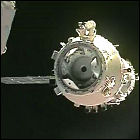 China launches its fourth manned space mission, Shenzhou 9, on the first manned flight to the small space station Tiangong-1. The crew consists of Jing Haipeng, Liu Wang, and the first female space traveler from China, Liu Yang. Automated docking at Tiangong-1 has been rehearsed by ground controllers during the unmanned Shenzhou 8 mission, but this mission requires both automatic and manual dockings to be carried out. The crew will spend a total of 13 days in space.
China launches its fourth manned space mission, Shenzhou 9, on the first manned flight to the small space station Tiangong-1. The crew consists of Jing Haipeng, Liu Wang, and the first female space traveler from China, Liu Yang. Automated docking at Tiangong-1 has been rehearsed by ground controllers during the unmanned Shenzhou 8 mission, but this mission requires both automatic and manual dockings to be carried out. The crew will spend a total of 13 days in space.
Tiangong-1 space station launched
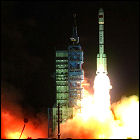 China launches its first space station, an “orbital laboratory” called Tiangong-1 (which translates roughly to “heavenly palace”). No manned mission to Tiangong-1 is planned until after ground controllers launch a remote-controlled Shenzhou vehicle, Shenzhou 8, to practice docking maneuvers and remotely sample the atmosphere aboard Tiangong-1’s pressurized area. The first manned visitors to Tiangong-1 won’t lift off until 2012.
China launches its first space station, an “orbital laboratory” called Tiangong-1 (which translates roughly to “heavenly palace”). No manned mission to Tiangong-1 is planned until after ground controllers launch a remote-controlled Shenzhou vehicle, Shenzhou 8, to practice docking maneuvers and remotely sample the atmosphere aboard Tiangong-1’s pressurized area. The first manned visitors to Tiangong-1 won’t lift off until 2012.